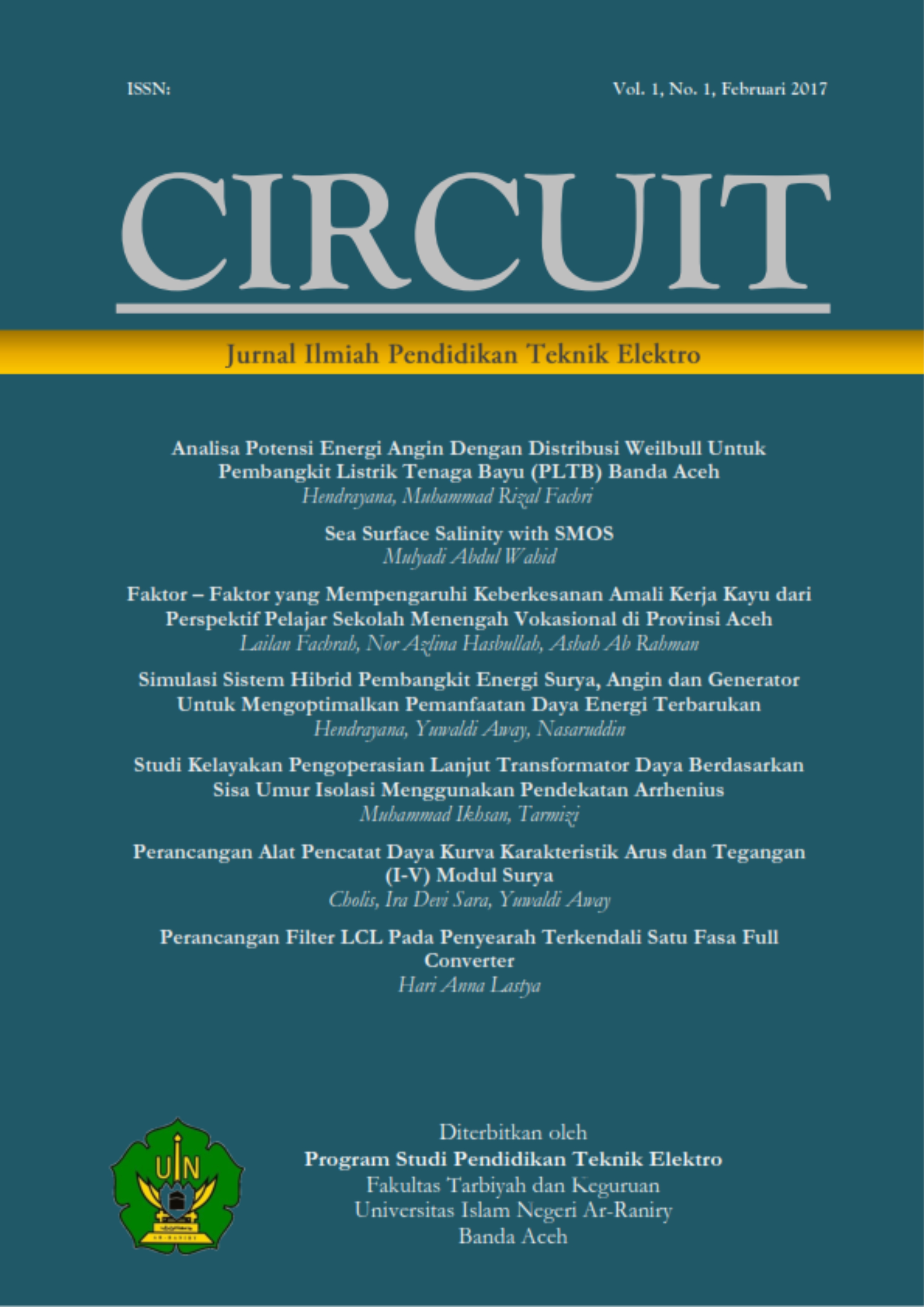Rancang Bangun Sistem Konversi Energi Panas Api Menjadi Energi Listrik Sebagai Alat Charger Baterai Menggunakan Termoelektrik
DOI:
https://doi.org/10.22373/crc.v6i1.10236Keywords:
Thermoelectric, Thermoelectric Generator (TEG), LM317 IC, Heat, Electricity energyAbstract
The utilization of heat energy as a generator of electrical energy was conducted by using thermoelectric elements. The conversion system with Thermoelectric Generator (TEG) elements currently used in many time during the combustion process. Likewise, the fuel is sourced from charcoal, wood, coal, palm oil shells, or garbage. Based on the properties and advantages of those fuel components, this research is carried out to study and develop a system according to the capabilities of the TEG components to become a useful things. TEG components can be designed into a super mini generating system by converting fire heat into electricity. The method used in this research is a bonfire heat energy conversion system into electrical energy. The heat from the fire will be used to recharge batteries such as HT batteries, flashlights, GPS, etc. The input of the system is heat, which consisted the heat of a campfire or cooking fire. The input component itself is a converter, namely peltier. Peltier function is to convert heat energy directly into electricity. The result of this research is the output about 3.7 V. This design uses IC LM317 as a regulator to process the output voltage of the conversion system. The regulator is important to succed the battery does not overcharge and damage.
References
Abduh, Muhammad, Iradiratu D.P.K, and Belly Yan Dewantara. (2019). Deteksi Kerusakan Outer Race Bearing Pada Motor Induksi Menggunakan Analisis Arus Stator.” Seminar Nasional Inovasi dan Aplikasi Teknologi di Industri 1(2): 1–6.
J. T. Elektro, F. T. Industri, and U. Gunadarma. (2013). Generator Mini dengan Prinsip Termoelektrik dari Uap Panas Kondensor pada Sistem Pendingin, 10(4), 180–185.
D. Wulandari, (2018). Thermoelectric Generator Dengan Variasi Perubahan Suhu. 05, 66–72.
M. Yusuf. (2018). Memanfaatkan Limbah Panas Mesin Mobil City Car Menggunakan Modul Thermoelectric Cooler ( TEC ), 1–6
M. Khalid, M. Syukri, and M. Gapy, (2016). Pemanfaatan Energi Panas Sebagai Pembangkit Listrik Alternatif Berskala Kecil Dengan Menggunakan Termoelektrik, 1(3), 57–62
J. Sumarjo, A. Santosa, and M. I. Permana. (2017). Pemanfaatan Sumber Panas Pada Kompor Menggunakan 10 Thermoelectric Generator Dirangkai Secara Seri. 11(2), 123–128
Nogueira, Jason Scott. (1997). A Guide to Designing and Optimizing Small Photovoltaic System. Massachusetts Institute of Technology.
A. A. Rafsanjani, E. Kurniawan, F. T. Elektro, U. Telkom, and B. Converter. (2017). Desain Dan Implementasi Generator Thermoelectric Sebagai Sumber Energi Alternatif Untuk Keperluan Darurat Desain and Implementation Thermoelectric Generator, 4(3), 3311–3316,
A. R. Fajria, B. Priyanto, and I. Pakaya. (2017). Rancang Bangun Penstabil Tegangan pada Pembangkit Termoelektrik Skala Pico Berbasis Boost Converter. 2(2), 117–124
N. Putra, R. A. Koestoer, M. Adhitya, A. Roekettino, and B. Trianto. (2009). Kendaraan Hibrid. 13(2), 53–58
S. C. Puspita, H. Sunarno, and B. Indarto. (2017). Generator Termoelektrik untuk Pengisisan Aki. 2–5
Downloads
Published
Issue
Section
License
Authors who publish in CIRCUIT: Jurnal Ilmiah Pendidikan Teknik Elektro agree to the following terms:
- Authors retain copyright and grant the journal right of first publication with the work licensed under a Creative Commons Attribution-ShareAlike 4.0 International License (CC BY-SA 4.0) that allows others to share and adapt the work with an acknowledgement of the authorship and initial publication in this journal
- Authors are able to enter into separate, additional contractual arrangements for the non-exclusive distribution of the journal's published version of the work (e.g., post it to an institutional repository or publish it in a book), with an acknowledgment of its initial publication in this journal.
- Authors are permitted and encouraged to post their work online (e.g., in institutional repositories or on their website) prior to and during the submission process, as it can lead to productive exchanges, as well as earlier and greater citation of published work. (See The Effect of Open Acces)

